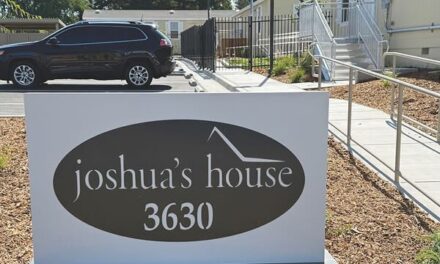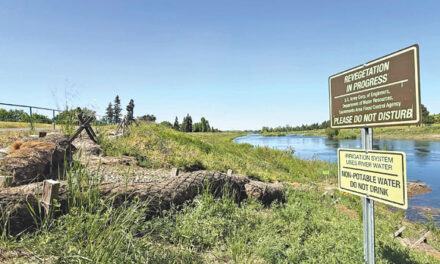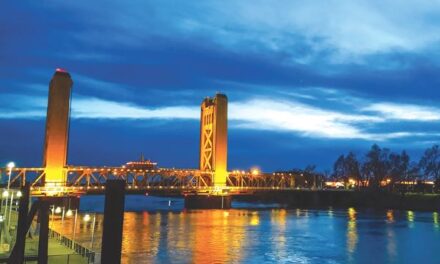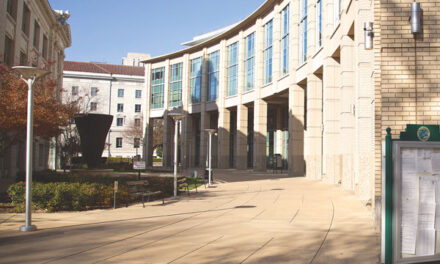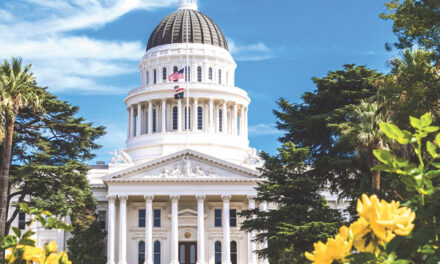Better Safe
Flood risk is too great to delay levee repairs
By Jeff Harris
May 2025
In the winters of 1986 and 1997, the American River levee system sustained so much erosion damage that catastrophic flooding was imminent. Thankfully, through good management of the Folsom reservoir and a fortuitous end to the rains, disaster was averted. But it was close.
Levees in River Park were vulnerable to collapse. The water velocity near River Park is intensified by the narrow channel, increasing erosion potential. The city was imperiled as river heights grew.
After the 1986 event, the Sacramento Area Flood Control Agency was created to assess the region’s flood risk and develop projects to lower and prevent it. Three main problems were identified: seepage, erosion and the need to increase conveyance of floodwater safely down the American River.
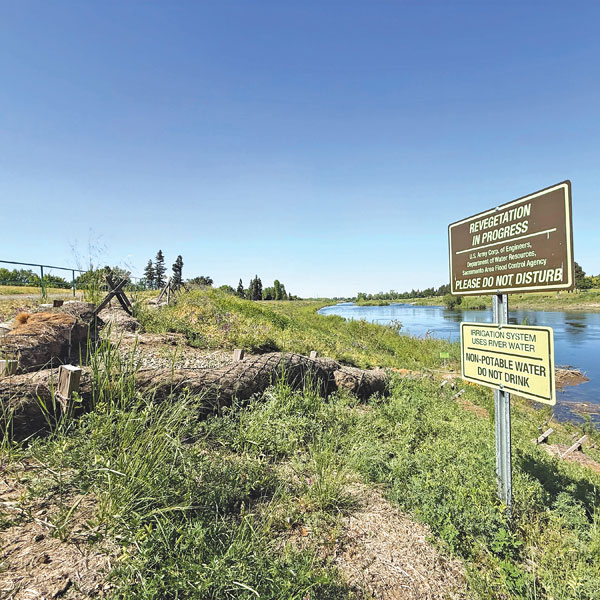
Much of the work is finished. Cutoff walls were installed in levees to address seepage and boils. The auxiliary spillway at Folsom allows greater control of floodwater releases. The Sacramento Weir is being widened to move more floodwater into the Yolo bypass.
The weak link is levee erosion during major winter storms.
The recently completed erosion-control project adjacent to River Park, built by contractors for the U.S. Army Corps of Engineers, now provides substantial flood-risk reduction. I’ve lived in River Park for 35 years and sleep a lot better.
The project wasn’t without controversy. Many trees were removed. About 100,000 tons of rocks were placed and covered with soil, establishing planting beds. Rock is now barely visible. The project was designed to enhance habitat for vegetation and fish, and remove non-native species.
Without a doubt, the project disrupted the neighborhood. Trees were cut and truck traffic endured. It looked barren for a spell. But after two years, plantings are established and growing. Given five more years, the area will be back to a nice habitat. Nature repairs itself with ferocity.
As a City Council member, I supported the project in the best interests of constituents. I received negative comments, but everyone benefited.
The last weak link in American River flood controls are the levees from Campus Commons upstream to the Mayhew area. Water velocities and topography there are easier to work with, so the project will be less impactful than in River Park.
I recently walked the proposed project area and canoed from Sunrise downstream to Howe to view the erosion risk, which is apparent. This is a necessary project.
Again, there’s an outcry about the loss of trees and wildlife habitat. I understand those concerns. They are legitimate. But the benefits far outweigh the loss.
The project is now in the environmental review process. Hundreds of comments have been received due to the efforts of the group American River Trees. Responses from the Army Corps and flood authorities will be out soon.
I love the American River Parkway. I co-created the Lower American Parkway Conservancy to receive millions of dollars for parkway restorations and enhancements. I’ve seen the damage floodwater can wreak on the parkway. But it always rebounded, especially with thoughtful mitigation plantings.
Change can be difficult, but we are playing the long game. The goal is to minimize impacts to the parkway and protect the safety and livelihoods of 500,000 residents. American River levee work is a necessary tradeoff to keep Sacramento safe and thriving in the face of climate change.
Jeff Harris represented District 3 on City Council from 2014 to 2022. He can be reached at cadence@mycci.net. Follow us on Facebook and Instagram: @insidesacramento.




